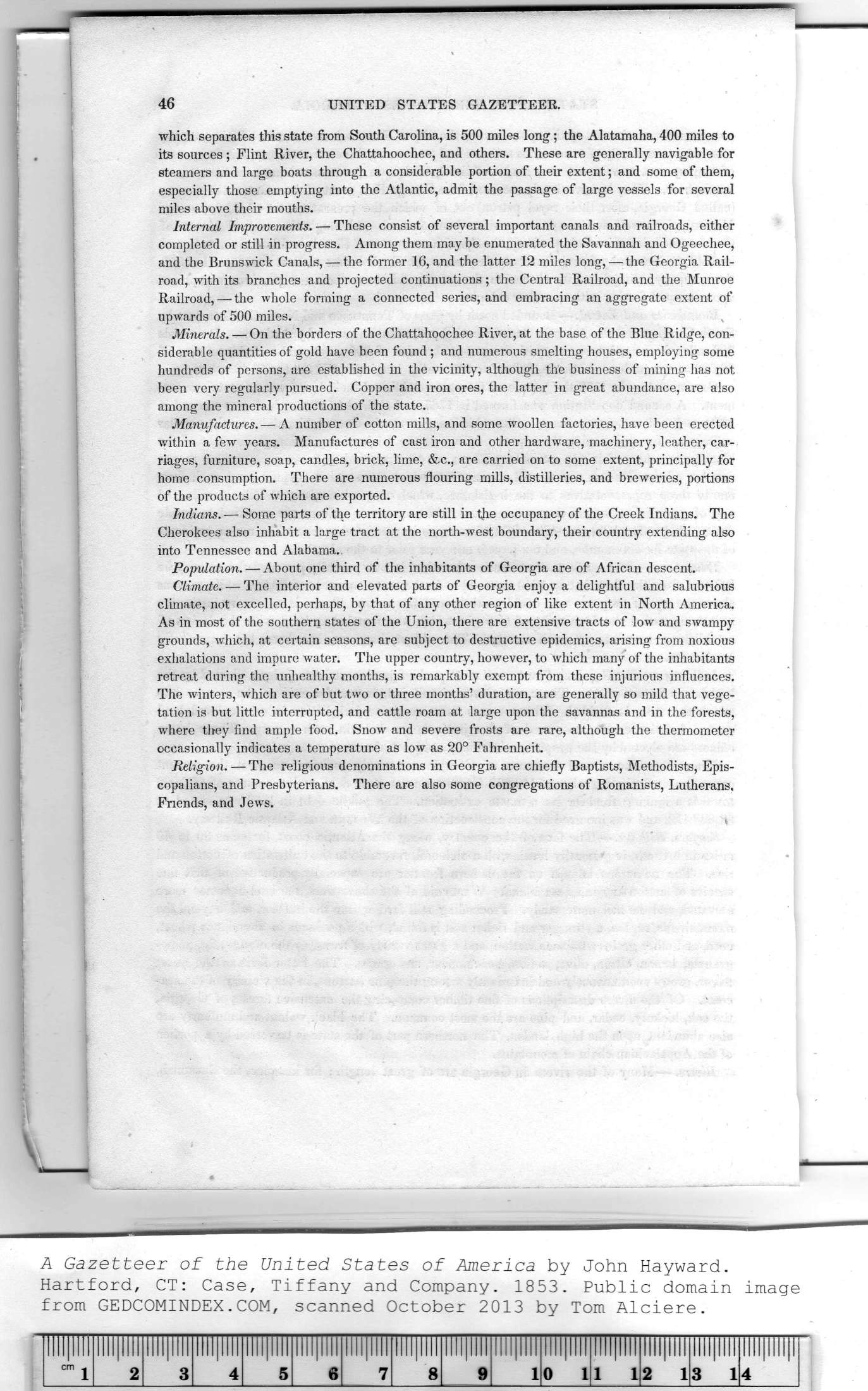|
|
Note: Ctrl and + increases the font size of the text below, Ctrl and - decreases it, and Ctrl and 0 resets it to default size.
46 UNITED STATES GAZETTEER.
which separates this state from South Carolina, is 500 miles long; the Alatamaha, 400 miles to
its sources; Flint River, the Chattahoochee, and others. These are generally navigable for
steamers and large boats through a considerable portion of their extent; and some of them,
especially those emptying into the Atlantic, admit the passage of large vessels for several
miles above their mouths.
Internal Improvements. — These consist of several important canals and railroads, either
completed or still in progress. Among them may be enumerated the Savannah and Ogeechee,
and the Brunswick Canals, — the former 16, and the latter 12 miles long, — the Georgia Rail-
road, with its branches and projected continuations; the Central Railroad, and the Munroe
Railroad, — the whole forming a connected series, and embracing an aggregate extent of
upwards of 500 miles.
Minerals. — On the borders of the Chattahoochee River, at the base of the Blue Ridge, con-
siderable quantities of gold have been found ; and numerous smelting houses, employing some
hundreds of persons, are established in the vicinity, although the business of mining has not
been very regularly pursued. Copper and iron ores, the latter in great abundance, are also
among the mineral productions of the state.
Manufactures.— A number of cotton mills, and some woollen factories, have been erected
within a few years. Manufactures of cast iron and other hardware, machinery, leather, car-
riages, furniture, soap, candles, brick, lime, &c., are carried on to some extent, principally for
home consumption. There are numerous flouring mills, distilleries, and breweries, portions
of the products of which are exported.
Indians. — Some parts of the territory are still in the occupancy of the Creek Indians. The
Cherokees also inhabit a large tract at the north-west boundary, their country extending also
into Tennessee and Alabama.
Population. — About one third of the inhabitants of Georgia are of African descent.
Climate. — The interior and elevated parts of Georgia enjoy a delightful and salubrious
climate, not excelled, perhaps, by that of any other region of like extent in North America.
As in most of the southern states of the Union, there are extensive tracts of low and swampy
grounds, which, at certain seasons, are subject to destructive epidemics, arising from noxious
exhalations and impure water. The upper country, however, to which man}'- of the inhabitants
retreat during the unhealthy months, is remarkably exempt from these injurious influences.
The winters, which are of but two or three months' duration, are generally so mild that vege-
tation is but little interrupted, and cattle roam at large upon the savannas and in the forests,
where they find ample food. Snow and severe frosts are rare, although the thermometer
occasionally indicates a temperature as low as 20° Fahrenheit.
Religion. — The religious denominations in Georgia are chiefly Baptists, Methodists, Epis-
copalians, and Presbyterians. There are also some congregations of Romanists, Lutherans.
Friends, and Jews.
|
